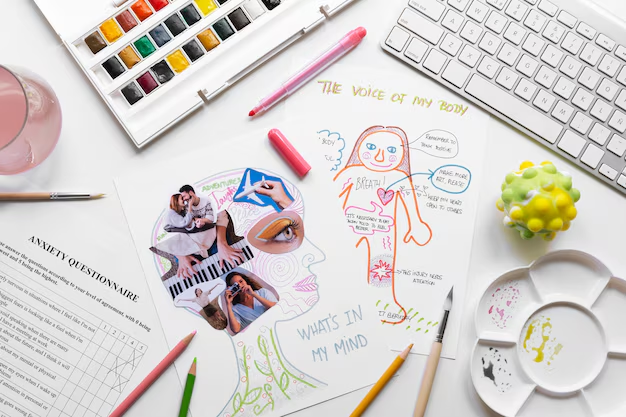In a world filled with choices, products, and experiences, design goes beyond merely creating visually pleasing objects. It plays an integral role in shaping our emotions, guiding our decisions, and influencing our experiences. The emotional impact of design is often overlooked, yet it is an essential aspect of how we interact with the world around us. As the saying goes, “People don’t buy what you do; they buy why you do it.” This idea holds true not only for business and branding but for design itself. When a product or experience resonates emotionally, it creates lasting impressions and powerful connections with its audience.
The Emotional Power of Design
Design is far more than the sum of colors, shapes, and typography. It is about creating experiences that evoke feelings, stir memories, and even alter moods. The emotions triggered by design play a critical role in how users perceive a product or brand, how they navigate a space, and ultimately, how satisfied they feel with the experience. The role of emotion in design transcends the superficial; it’s about creating something that feels right on a deeper, often subconscious level.
Consider a well-designed car: its sleek curves and polished finish appeal to the eye, but it’s the feeling of safety, speed, and comfort it offers that transforms a product into an experience. A beautifully crafted website might feature modern aesthetics, but it is the sense of ease and satisfaction that a visitor feels while navigating it that truly leaves a mark. Whether it’s the warmth of a coffee shop’s interior design or the joy of interacting with an intuitive mobile app, these emotional responses influence our decisions and perceptions more powerfully than we might realize.
Emotional Design: The Work of Don Norman
One of the most influential voices in the intersection of emotion and design is Don Norman, whose work on “emotional design” has reshaped how designers think about user experiences. In his book Emotional Design: Why We Love (or Hate) Everyday Things, Norman explores how good design goes beyond functionality to appeal to our emotions. He identifies three levels of emotional response:
- Visceral: This level is the immediate, gut reaction we have to a design based on instinct. It’s the way a product looks, feels, and sounds in its first impression. The smooth curves of a smartphone, the weight of a quality pen, or the color palette of a website all elicit visceral responses. These design elements create a sense of pleasure or dissatisfaction before we even engage with the product or experience.
- Behavioral: This emotional response focuses on how a design functions and how it fits into our lives. It is about usability, ease, and practicality. A product might evoke joy simply because it’s intuitive to use and doesn’t require much thought. The emotional satisfaction here comes from mastery and the effectiveness of design.
- Reflective: This is the deep, lasting emotional connection. Reflective emotions are tied to meaning, memories, and identity. A product or experience may carry personal significance, such as a beloved heirloom or a piece of art. Reflective design evokes pride, nostalgia, or a sense of belonging, influencing decisions on a much deeper, often subconscious level.
The Science Behind Emotion and Design
Understanding the emotional influence of design isn’t just a philosophical exercise; it is backed by science. Psychological studies have shown that human emotions are strongly linked to our perception of the world and our decision-making process. The brain is wired to respond emotionally to visual stimuli, and emotions directly impact our judgment. This is why colors, shapes, and textures are so powerful in design—they are not just aesthetic choices, but tools that trigger specific emotional responses.
For example, the color blue tends to evoke feelings of calm and trustworthiness, while red is often associated with excitement and urgency. This is why financial institutions use blue in their branding and why clearance sales are often marked with bold red signs. Design elements, from font selection to layout structure, influence how users feel, perceive, and interact with content or products.
The Role of Emotion in Branding
Branding is one of the most effective applications of emotional design. The goal of branding is not just to convey information about a company or product, but to evoke a particular emotional response. Iconic brands like Apple, Coca-Cola, and Nike have mastered the art of emotional design. They craft experiences and visuals that resonate with consumers on a deeper level, forming strong emotional connections that foster loyalty and advocacy.
Apple, for instance, doesn’t just sell technology; it sells a lifestyle. Its minimalist design philosophy, combined with seamless functionality, triggers a visceral feeling of innovation and sophistication. Consumers associate Apple products with status, ease of use, and aspirational values—creating an emotional bond that goes beyond the products themselves.
Emotion and User Experience (UX) Design
In the world of digital design, the concept of emotional design is critical in creating positive user experiences (UX). Websites, apps, and software that are designed with empathy for the user’s emotional state can foster deeper engagement and satisfaction. UX designers aim to craft experiences that are not just functional but also emotionally resonant.
For example, the use of micro-interactions (small, delightful details like a button animation or a subtle sound when completing a task) can elicit positive emotions that enhance the overall experience. A well-designed notification system can make users feel cared for, not overwhelmed. On the flip side, frustrating design choices, like long loading times or confusing navigation, can quickly lead to negative emotional responses, such as stress or frustration, ultimately causing users to abandon a product.
The Future of Emotional Design
As the field of design continues to evolve, understanding and harnessing the emotional power of design will only become more important. Advances in technology, such as artificial intelligence, virtual reality, and machine learning, are opening new frontiers in design that have the potential to connect with users on even deeper emotional levels. With the rise of personalized design experiences, products and interfaces will increasingly be tailored to individual emotional responses, offering a more human-centered approach to design.
Designers will also need to be mindful of the ethical implications of emotional manipulation. While it’s possible to evoke strong emotions to engage users, it’s crucial to balance that with transparency, honesty, and respect for user autonomy. The goal should always be to create positive, empowering emotional connections, not exploitative ones.
Conclusion
The role of emotion in design is far more than an afterthought—it is at the heart of creating meaningful, lasting experiences. By tapping into the emotional responses of users, designers can craft products and experiences that resonate on a deeper level, fostering connections that are both functional and emotionally rich. As we move forward, emotional design will continue to be a driving force in the development of products, branding, and digital experiences, reminding us that design is not just about how things look, but how they make us feel.

